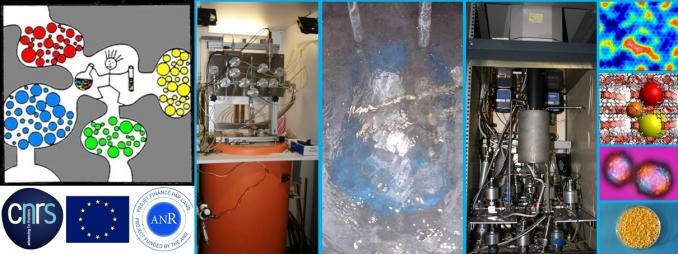Research

|
Research |
|
Adsorption is a universal phenomenon that can be found in a wide range of domains in science and technology where nanostructured and porous solids play a central role in adsorption based processes. It is essential to be able to both characterize the materials involved and understand the adsorption phenomena in play. My work in the “Separation and Storage of Gases” (S2G) group works to fill gaps in our understanding in these two areas with a focus on societal relevant applications in order to strengthen the link between blue sky research and product development. This responds to one of the Horizon 2020 goals [1]. From a fundamental standpoint, our knowledge base consists of a four pronged approach :
These distinctive experimental approaches are attractive to outside collaborations. Our unique experimental approaches are the main reason for our attractiveness, which, coupled with our knowledge base has allowed us to develop a number of strategic collaborations both nationally and internationally. These collaborations have been successful in terms of project funding and valorization (high level publications, invited talks, …). Note that several of these projects are coordinated by myself. The research topics that we have focused on in the last few years have essentially replied to Horizon 2020 targets of ‘climate change’ and ‘energy’. In particular, we have looked at problems surrounding carbon capture. My group has specialized in the evaluation of novel materials for CO2 recovery. Indeed, the brutal truth is that our hydrocarbon resources (coal, petrol, gas) will continue to be used over the foreseeable future and that there is a crucial need to lower the carbon footprint of a number of key process (cement, steel, electricity production ...). We have positioned our work centrally between experts working on the synthesis of novel metal-organic framework materials and those in process development. Our own strategy has involved (i) the development of a high throughput screening approach in order to obtain adsorption uptakes and initial cycling behaviour with small amounts of material (<100mg) . This allows a selection of materials for (ii) the further characterization of adsorption energies, effect of temperature and prediction of separation properties on upscaled powder materials. The final step allows to choose a limited amount of structures to (iii) make an initial testing of materials which have been made in shaped form. We have equally studied the effect of water on CO2 capture and we are equally interested in CO recovery which is a problem in steel production for example. The group is highly active in the use of nanoporous and nanostructured materials for energy related applications correlated to hydrogen as an energy vector where its storage could be required. Our microcalorimetry measurements at 77K are unique and we are the only group in the world able to directly measure H2 adsorption energies which allows an initial appraisal of materials for hydrogen storage applications. Materials of interest can then be studied at room temperature in terms of adsorption energy and kinetics. In parallel, much effort is devoted to theoretical studies, with Bogdan KUCHTA, to predict which could be the most optimal materials for hydrogen storage applications. This is combined with microcalorimetery experiments where effort has been devoted as to how to increase the surface area of graphene related materials as well as how it can be possible to render the surfaces more attractive to hydrogen via the introduction of energetic heterogeneities. I am equally interested in the use of nanostructured materials for novel mechanical energy applications. Here, flexible MOFs may have the possibility to be used as nanosprings, dampers or shock absorbers depending on their mechanical properties. __ [1] http://ec.europa.eu/europe2020/europe-2020-in-a-nutshell/priorities/smart-growth/index_en.htm [2] https://cnrsformation.cnrs.fr/stage.php?stage=15176&axe=54 [3] Adsorption by Powders and Porous Solids, Principles, Methodology and Applications, J. Rouquerol, F. Rouquerol, P. Llewellyn, G. Maurin, K.S.W. Sing, Second Edition (2014), Academic Press, Oxford (G.B.), 646 pages. ISBN−13: 978−0080970356. (web site) |
| Current projects |
|
Europe
National |